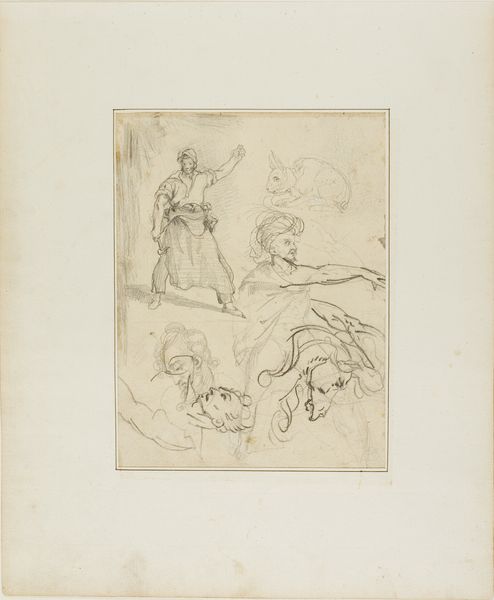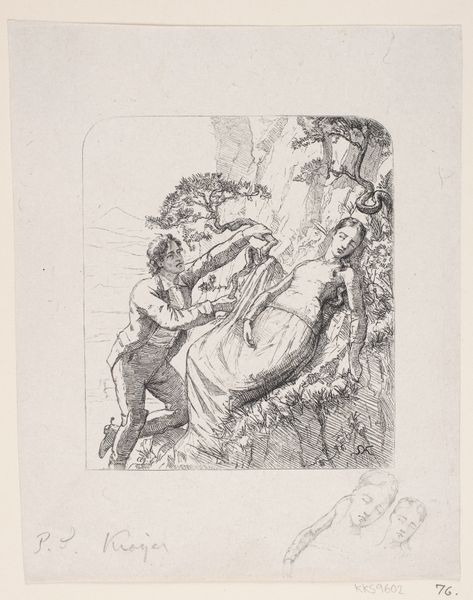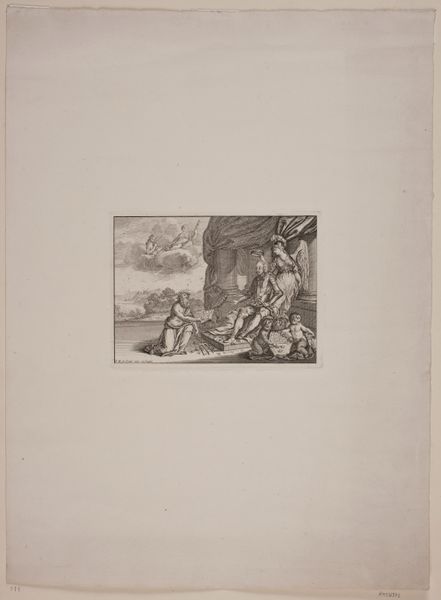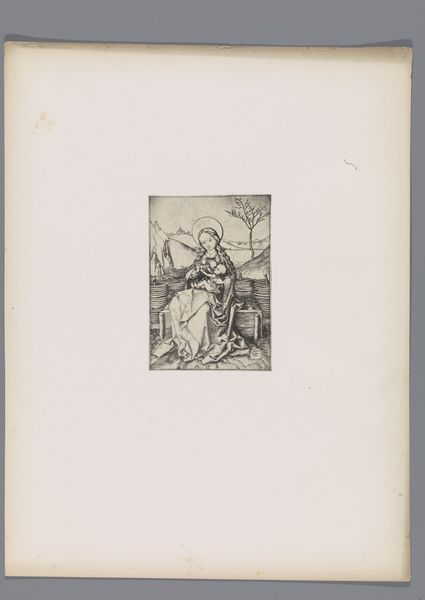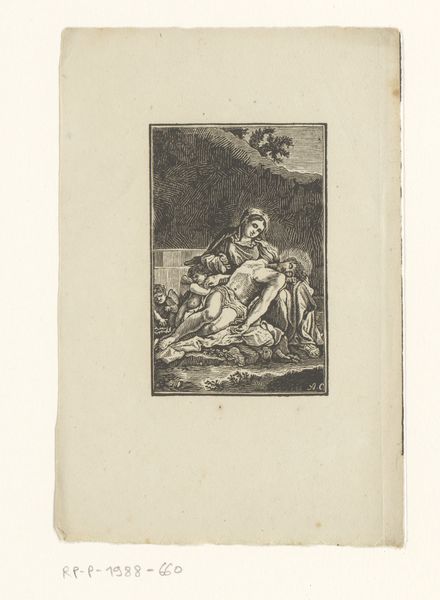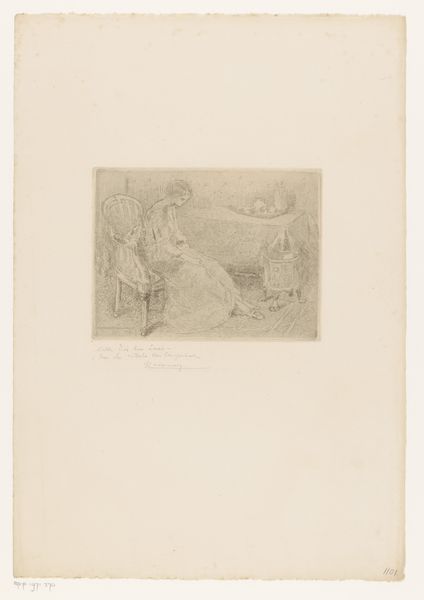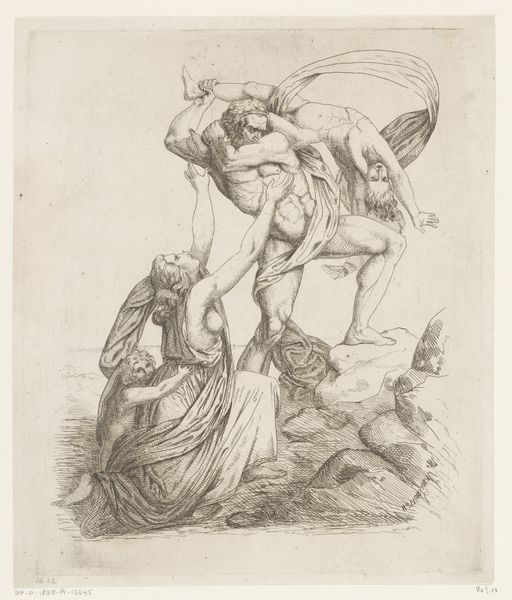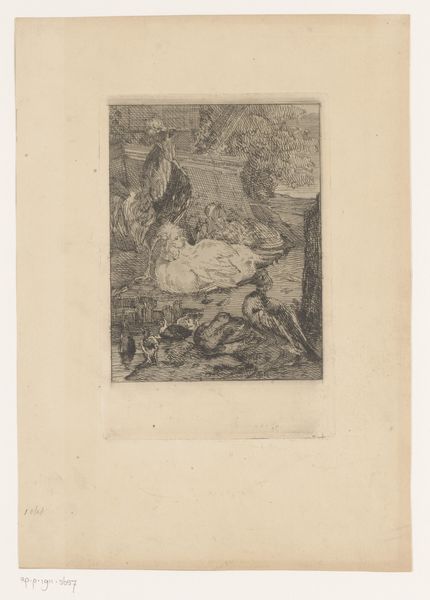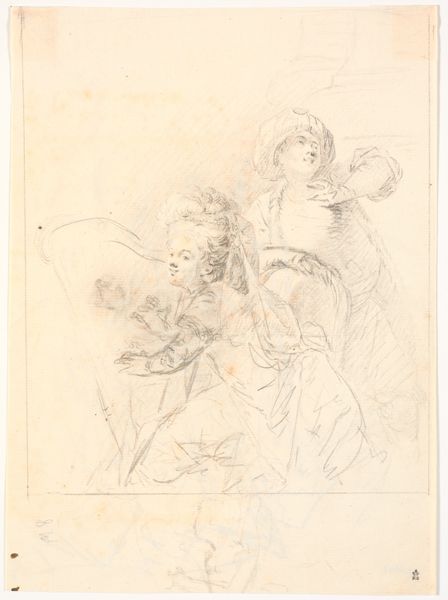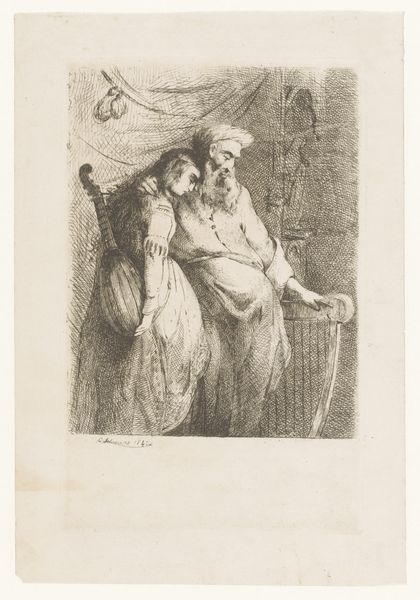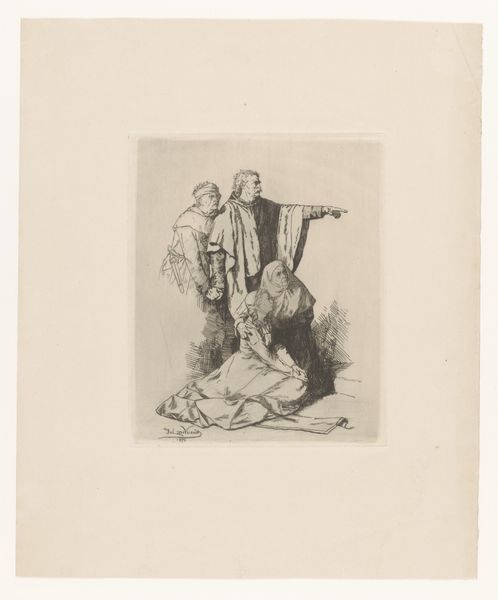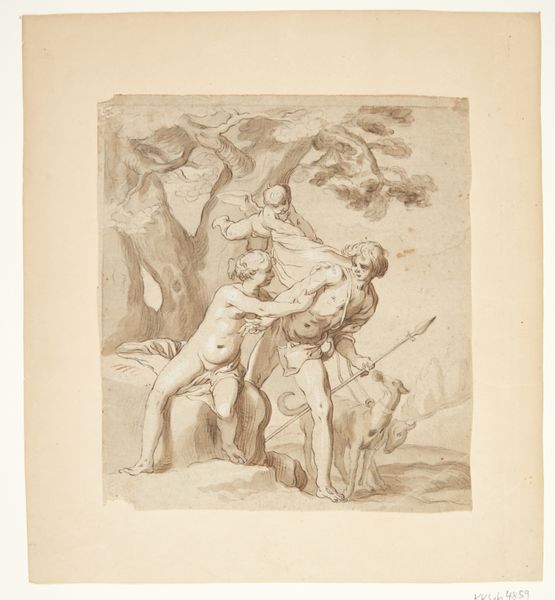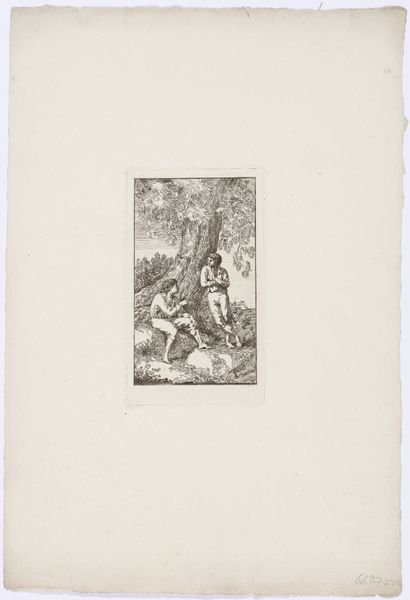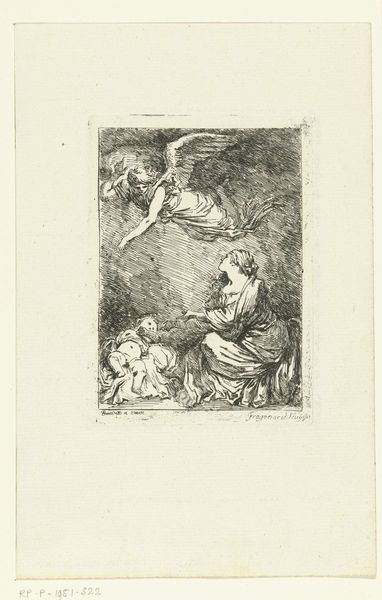
drawing, print, etching
#
drawing
#
baroque
# print
#
etching
#
etching
#
figuration
#
history-painting
Dimensions: sheet: 13 x 8 1/8 in. (33 x 20.7 cm)
Copyright: Public Domain
Curator: So, here we have Johann Elias Ridinger's "Roman Warriors," created sometime between 1700 and 1767. It's a print, specifically an etching and drawing, residing here at the Metropolitan Museum of Art. The whole composition feels rather restless, wouldn’t you agree? Editor: Restless, definitely. There's an unsettled energy in that linework, almost like the scene itself is vibrating. But also, a peculiar backward glance into the theater of war... Are they leaving a battle? Surveying it, perhaps? Curator: That's what fascinates me—the "warriors" are turned away from us, as if already moving on to the next conquest. It's this interesting back view, the sense of a figure facing the unknown—armed for conflict but seen from a vulnerable angle. Their backs are literally to the viewer! Editor: The lack of engagement with the viewer does push the piece into symbol territory. Backs turned, holding spears...They almost become representations of power rather than actual people. Their power seems rooted in movement, in perpetually striding forward, spear held high. Are those laurel wreaths crowning them? Curator: Indeed! Laurels, always signifying triumph. The interesting thing about Ridinger is how he merges the historical with this intense personal vision. His lines almost dance with baroque energy, yet retain a grounded sense of observation, a sort of imagined realism, but from how many times removed from history itself? I wonder. Editor: Ridinger is very much of his time. Remember, during the baroque period the goal was often dramatic emotional effect. It wasn't simply a rendering of fact; it was a sensory overload of sorts that could carry all of that emotional, cultural, psychological weight forward through these warriors. So, turning away seems more like drawing the viewer *into* this symbolic weight of conquest. Curator: You put it beautifully! It’s as if the act of turning away amplifies their aura, making them monumental symbols, as you say, less human than embodiments of eternal power and military might. The lines feel energetic. What sort of mental effect would they have had then and now? Editor: These etchings become little mirrors reflecting our collective relationship with power. Ridinger is using very old images in a very modern psychological fashion, and perhaps inviting us to confront how little our needs for them have actually changed, centuries after the fact. Curator: Absolutely. It really makes you wonder, doesn’t it, how deeply rooted those heroic archetypes remain within us, ready to be evoked even today. Editor: Precisely! And isn’t it interesting that something sketched over 250 years ago can still tap into that very visceral pulse of historical power.
Comments
No comments
Be the first to comment and join the conversation on the ultimate creative platform.
